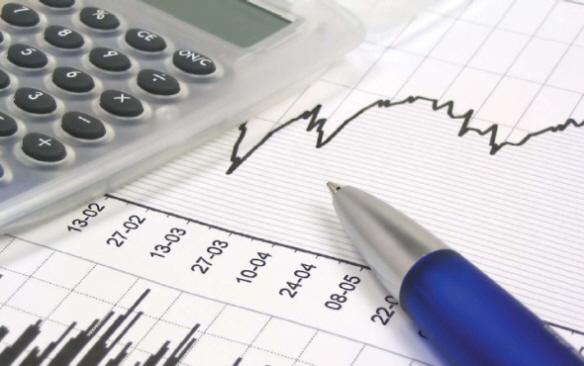Experts eye creation of Bad Bank as tool to improve banking sector

By Nigar Abbasova
Financial sector situation and development of the banking sector in Azerbaijan have been negatively affected by different unfavorable processes such as worsening of macroeconomic indicators in 2015-2016, devaluation of the national currency etc. Moreover, a certain number of banks have been closed due to liquidity problems.
Experts believe that to improve the situation, it is reasonable to create a separate institution that will be able to buy bad assets of the banks operating in the country.
President of the Azerbaijan Banks’ Association Zakir Nuriyev, commenting on the issue, said that such agency may help decrease the volume of bad assets in the county’s banking sector and optimize management of these assets.
“The agency may function either as a Bad Bank (a bank set up to buy the bad loans of a bank with nonperforming assets) or any other form. Aqrarcredit state-owned non-banking credit organization (NBCO) possesses a good experience in the sphere of managing bad loans as the company was engaged in the management of “toxic” assets of different banks and a similar occasion related with the International Bank of Azerbaijan (IBA). In this regards, the excising experience may be further developed with the introduction of a new format. The measure may be realized within the framework of the program on financial rehabilitation,” Nuriyev said.
Aqrarcredit, the largest NBCO in the country was engaged in the management of bad assets of Agro-Investment Bank, Industrial-Investment Bank and Savings Bank, which were liquidated in late 1990’s and early 2000’s. BUS bank was further established through merging three major state banks, which was subsequently privatized and renamed to Kapital Bank.
In July 2015, President Ilham Aliyev signed a decree on the measures for rehabilitation related to the preparations for privatizing the state-owned shares of the International Bank of Azerbaijan JSC.
IBA's distressed assets had been removed from its balance sheet and transferred to Agrocredit in 2015 to recover financial position of the bank. Bonds worth 3 billion manats ($1.8 billion) were issued under state guarantee to provide the bank with liquid funds.
Nevertheless, the government of the country doesn’t see the necessity to transform Agrocredit into the bad asset management agency. Earlier, Finance Minister Samir Sharifiv said that the NBCO tackles the issue only in case of relevant instructions of the head of state. Therefore, should an institution engaged in the management of bad assets appear in Azerbaijan, it will not be established on the basis of “Aqrarcredit”.
Highlighting the issue of whether such institution may be established under the Azerbaijan Deposit Insurance Fund (ADIF), Fund’s head Azad Javadov said that ADIF has a special department, which deals with bad assets of the banks, where the Fund performs a role of a liquidator.
“Insurance funds perform the role of liquidators in many countries and a similar practice is used in Azerbaijan. When ADIF receives funds of closed banks, it gets bad assets along with non-distressed assets,” he said.
The Fund lately performed a role of a liquidator in eight banks, including Texnilabank, Bank of Azerbaijan, Dekabank, Parabank, Kredobank, Zaminbank, Atrabank, and Caucasus Development Bank, licenses of which were withdrawn in 2016.
Director on Financial organizations at Fitch international Rating agency, Dmitry Vasilyev also agreed that the establishment of Bad bank is reasonable.
“Banks are not able to provide for sufficient volume capital to recover from losses which in turn triggered by depreciation of assets. They need a support of shareholders or a state,” he told Trend.
The expert said that one of the solutions in this situation is purchase of bad loans by Bad Bank. Nevertheless, he mentioned that another solution is the implementation of the process of recapitalization, which stands for the increase of authorized capital.
“Bad Bank is a mechanism of support, which may be rendered by means of pouring of capital into the system.”
The volume of bad loans as of July 2016 stood at 8.35 percent (1.5 billion manats ($ 0.92 billion)), according to the Central Bank of Azerbaijan (CBA).
Currently, 33 banks possess licenses for the implementation of banking activity in the country. CBA abolished licenses of EuroBank and Azerbaijan Credit Bank in 2015. Licenses of six banks including AtraBank, Caucasus Development Bank, Bank Technique, Ganja Bank, Bank of Azerbaijan and United Credit Bank were cancelled in early 2016. Recently, the licenses of DekaBank, KredoBank, Parabank and Zaminbank, Atrabank, and Caucasus Development bank have been revoked due to their failure to meet necessary requirements specified in the relevant legislation.
The official exchange rate of the US dollar and euro to Azerbaijani manat was set at 1.6204 manats and 1.8370 manats, respectively, on August 19.
---
Nigar Abbasova is AzerNews’ staff journalist, follow her on Twitter: @nigyar_abbasova
Follow us on Twitter @AzerNewsAz
Here we are to serve you with news right now. It does not cost much, but worth your attention.
Choose to support open, independent, quality journalism and subscribe on a monthly basis.
By subscribing to our online newspaper, you can have full digital access to all news, analysis, and much more.
You can also follow AzerNEWS on Twitter @AzerNewsAz or Facebook @AzerNewsNewspaper
Thank you!
